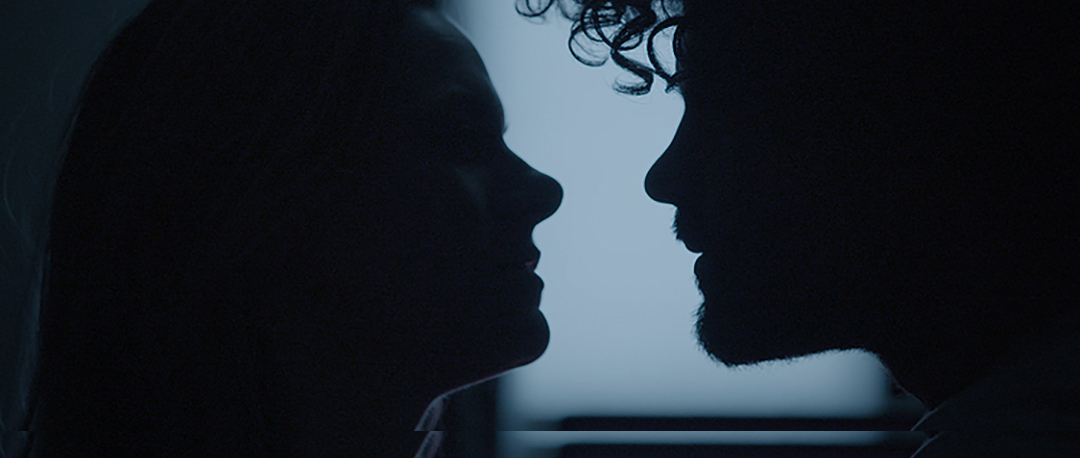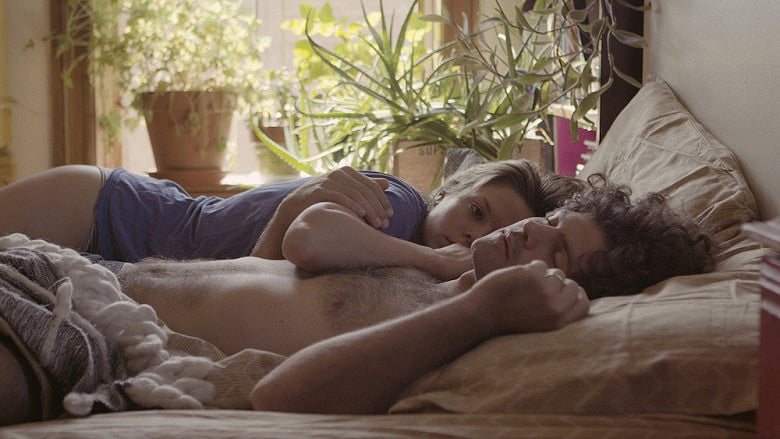
The Adulterers: Up Close and Personal
This intimate web series takes advantage of a nimble — yet high-quality — production footprint made possible by today’s compact digital cameras.
This intimate web series takes advantage of a nimble — yet high-quality — production footprint made possible by today’s compact digital cameras.
For several decades now, since its inception as the Utah/US Film Festival in 1978, the Sundance Film Festival — as it would later become known — has set trends for the filmmaking world as a whole. The projects screened, purchased and praised during the annual Park City event set the tone for what the industry is seeking. This year, for the first time, the Sundance Film Festival officially recognized new media projects with several new categories, including Indie Episodic, which was focused on the cutting-edge work being done in independent web series.
One of the first projects to be recognized in this new category is The Adulterers, created, written, produced and directed by actors Tonya Glanz and Chris Robert. Six episodes of the intimate series screened at the fest, ranging in length from 6 to 13 minutes each. Although it may seem like a scandalous and salacious title, The Adulterers looks at moments in the lives of two individuals having an extramarital affair after their intimate moments between the sheets, focusing on the interpersonal connections between the two illicit lovers, their growing connection with each other and their attempts not to fall in love and further confuse an already complicated situation. The couple is played by Chris Roberti and Tonya Glanz, and five episodes were photographed by cinematographer Zack Schamberg, while the sixth was shot and co-directed by filmmaker Darin Quan.
Much of the series was shot with the Canon EOS C300 MKII camera.
Schamberg, a graduate of NYU film, primarily works as a Local 600 camera operator and already had a brush with extraordinary success in the web series world. “When I was in film school, I was working on a web series called High Maintenance, similar in scale of production to The Adulterers,” Schamberg recalls. “It was just another film school classmate of mine, the creators and a sound person — very bare-bones production. That got ‘picked up’ by Vimeo for the second season who put a little bit of money into it. After that, it really got picked up by HBO to become a legitimate cable series. It became the poster child for web series becoming legitimate.

“It’s wonderful to see what kind of work can be created with very little — The Adulterers was like that — something special from very little.”
“On the early days of the show, I was doing b-camera operating, gaffing, a little bit of everything,” he continues. “Once the show got picked up by HBO and we got a full crew, I switched to operating full-time. Through that show I got my union days and became a Local 600 operator, that’s mostly what I do now, and I really love it. It’s funny, camera operating not a job that they teach you about in film school. Everyone there is a writer or director or cinematographer, no one talks about operating and what a great job it is! Since High Maintenance, I’ve operated on feature films, some TV shows and on the Saturday Night Live pre-filmed sketches. It’s all thanks to a web series — so working on The Adulterers kind of feels like full-circle.”
It was on High Maintenance that Schamberg met Glanz and Robert, and they hit it off very well and became friends. When the duo decided to embark on a web series of their own, they turned to Schamberg to shoot it for them. “This was a passion project for Tonya and Chris,” Schamberg attests. “It was a fun, experimental project done on a micro-budget with almost no crew. We shot all of my episodes in the same one-bedroom apartment so it was really just me, a sound mixer and a gaffer, but we split duties of setting up lights and I operated camera. It was a very intimate set, but very casual. Of course, when we were making it we had no idea that Sundance would create a new category and we would be premiering there! It’s a good lesson in that you never really know where these projects are going to end up with so many outlets these days.”
The first five episodes of the show were photographed over two days separated by several months, totaling over 30 minutes of screen time. The first day, three episodes were shot and when they returned several months later, the other two were photographed.

“My style as a shooter also comes from still photography. I invest a lot in still compositions and letting things happen within them; let the actors create compositions in a still frame.”
“We shot with the Canon C300 MKII for the first three episodes,” Schamberg attests. “It’s a great camera, I’ve used it a lot and I’m very comfortable with it. It’s a very intuitive camera. I started working with one on a long-term documentary project and I really liked it. I like the look. When we picked up production again the C300 wasn’t available so we shot with a Sony PXW-FS7. For the C300 we used my Canon EF still lenses from my [EOS] 5D days, mostly the 24-70mm f/2.8 L series and a Sigma 24-70mm, and I used the Angenieux lightweight Optimo zooms on the FS7 for the second shoot. I wanted to shoot the whole show on the C300, but we shot separate episodes on the FS7 so we didn't have to worry about intercutting. Each episode has its own slightly different look. For a project like this, I prefer the C300. We were using a lot of natural light, moving really fast, and I always know what I’m getting from the C300.”
For his lighting, Schamberg kept things simple with LiteMat LED fixtures to help fill and augment natural daylight. “I’m not going to try and compete with the light coming through the window,” he asserts. “I use fixtures as general fill. Mostly the apartment had really nice light through different windows at different parts of the day. At night, I used the LiteMat fixtures again, motivated by practicals. For this project I needed something light [meaning not heavy] that I could set up on my own with just one other person and move around quickly.”
When it came time to shoot the final, and longest, episode of the season, Schamberg was unavailable so Glanz and Robert turned to another filmmaker friend, Darin Quan, to step in and shoot the episode for them. It is the only episode of the six that was photographed in a different location — a modern office building, where we learn how the couple first met.
Quan started his film career in music. He went to college to study music and had a number of friends who were filmmakers. He ended up writing music for their short films and getting his feet wet in the world of production. “I never imagined myself being involved in movies,” Quan attests. “Even before music, I was into drawing, so I just started helping my filmmaking friends with creating storyboards. Then I got involved in helping during production — that’s really when I fell in love with movies and I wanted to make them. I wasn’t so fascinated with gear, but rather in the art of creating something with other people. Working with actors; having conversations about scenes — that’s the stuff that got me going. I’m not the kind of director who loves Steadicam shots or cranes and sliders. I like to keep it simple – let the performances tell the story. The less ‘stuff’ I can bring to set, the better.”
“I’m a fan of Canon when it comes to color space. They make the image look really good straight out of the camera without the need for a lot of massaging.”
Through script development and rehearsals it was determined that Quan would shoot and co-direct the episode that centers on a flashback to the lovers’ first encounters in the workplace and the early development of their flirtation.
“The shooting and directing thing works for me if I can keep the gear as simple as possible,” Quan asserts. “If I need to bring in more lights, I will, but my base setup is one big soft source. It’s a sheet of muslin that I bounce a light into — in this case, a Litepanels Astra fixture. I can put it pretty much anywhere, on a table, tape to wall, and not fiddle with gear too much, but I can get a lot of different looks from it.
“I think I always go back to classic, ’70s movies directed by Francis Ford Coppola or Sydney Lumet, and my style is to let an entire scene play out in front of a locked-off camera. This is a style that I really liked for this project. So, much of this series hinges on these small interactions between Chris and Tonya, letting them play in a two shot and not cutting just made sense to me. My style as a shooter also comes from still photography. I invest a lot in still compositions and letting things happen within them; let the actors create compositions in a still frame. It’s a minimalist camera approach; just arranging people and things and action within that frame. It’s also a style that lends itself to small independent, for sure. You’re dependent on money or gear. You don’t have to rent the $5,000 Ronin [stabilizer] — you can accomplish the storytelling in a much more simplistic fashion.”
The final episode of the season was shot with a combination of the Canon EOS C300 and the Sony FS7. The co-director/cinematographer notes, “I’m a fan of Canon when it comes to color space. They make the image look really good straight out of the camera without the need for a lot of massaging. When I need something more 4K, then I’ll go with the Sony, which is small enough for me to carry around on a tripod by myself. I own a lot of Canon EF glass and used that for both cameras for this.”
When it comes to the genre of web series, Quan offers, “You can play around a lot because, really, no one is watching,” he laughs. “You hope to connect with an audience, you hope for that High Maintenance kind of situation, but for the most part these things are quiet little projects where you can experiment. You can be freer with creative choices when you feel that no one is really watching in that there’s no studio or client over you, telling you want to do. It’s wonderful that Sundance is accepting web series now. It’s great when you have a recognized institution like Sundance reach out and acknowledge the little red-headed stepchild of the entertainment industry — web series — there’s a lot of great work out there done by really creative people that wouldn’t otherwise be seen. It’s wonderful to see what kind of work can be created with very little — The Adulterers was like that — something special from very little.”
Technical Specifications
| Aspect Ratio | 1.78:1 |
| Sensor | Digital Capture |
| Cameras | Canon C300 Mark II, Sony FS7 |
| Lenses | Canon EF, Angenieux Optimo Zoom |
This article was produced as part of the media partnership between AC and Canon in conjunction with the Sundance Film Festival. You'll find much more here, including a panel discussion with Schamberg and Quan as they discusses other aspects of working on The Adulterers.






